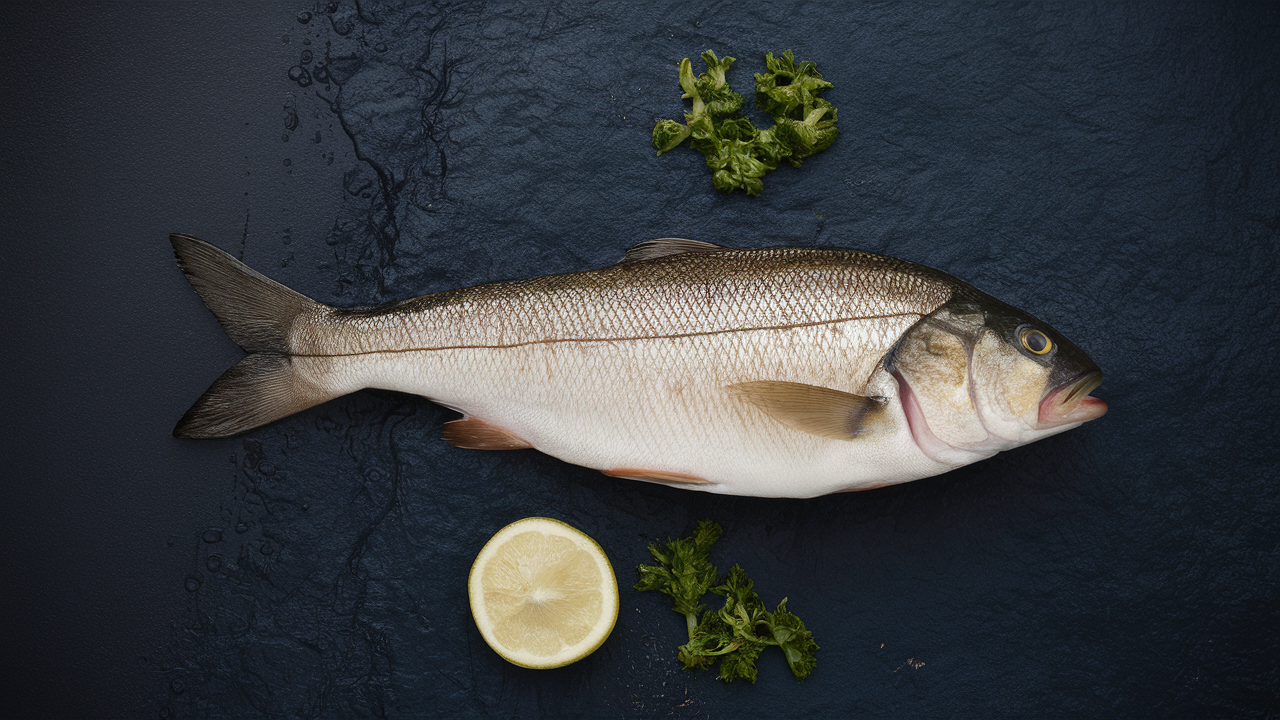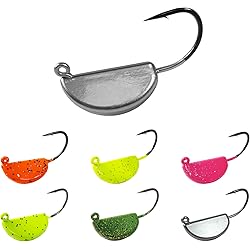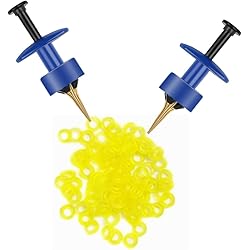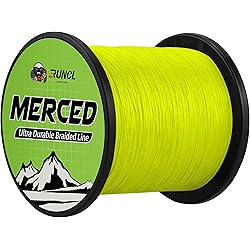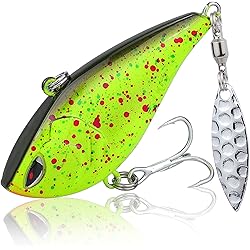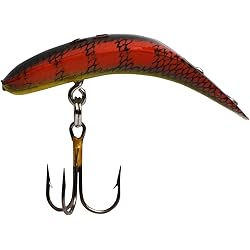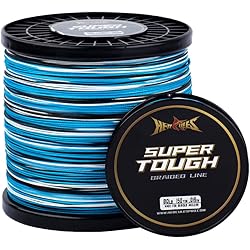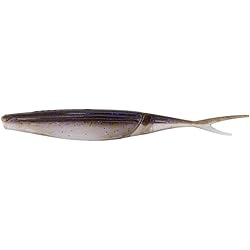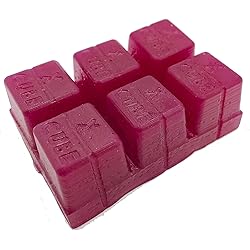Which fish has the best taste? When it comes to seafood, the question of which fish has the best taste is both subjective and tantalizing. With an array of flavors, textures, and culinary possibilities, different fish appeal to different palates and cooking methods. In this article, we’ll dive into the world of fish, exploring various species renowned for their taste, the characteristics that make them delicious, and the best ways to prepare them to highlight their flavors.
The Taste of Fish: What Makes It Delicious?
Before diving into specific fish species, it’s essential to understand the factors contributing to a fish’s taste. The flavor of fish can be influenced by:
- Fat Content: Fish with higher fat content, such as salmon and mackerel, often have a richer, more succulent taste.
- Freshness: The fresher the fish, the better the flavor. Fish that is not fresh can develop off-flavors.
- Diet: The diet of a fish can affect its taste. For instance, wild-caught fish often have a more complex flavor compared to farmed fish.
- Habitat: Fish from different environments (saltwater vs. freshwater) have distinct flavors due to varying mineral content in their habitats.
- Cooking Method: How fish is cooked—grilled, fried, baked, steamed—greatly impacts its taste and texture.

Top Fish Species Known for Their Taste
1. Salmon
Flavor Profile: Rich, oily, and slightly sweet
Salmon is celebrated for its robust flavor and versatility in cooking. The high-fat content of salmon provides a buttery texture that melts in your mouth. Wild-caught varieties, such as Alaskan King Salmon, are particularly prized for their deep flavor.
Best Cooking Methods:
- Grilling: Enhances the natural oiliness and adds a smoky flavor.
- Baking: Retains moisture and brings out the sweetness.
- Poaching: Maintains the delicate texture and flavor.
2. Halibut
Flavor Profile: Mild, slightly sweet, and firm
Halibut is known for its mild taste and firm, meaty texture. It’s a favorite among those who prefer a less “fishy” taste. The flesh is dense, making it perfect for a variety of cooking methods.
Best Cooking Methods:
- Baking: Keeps the fish moist and highlights its mild flavor.
- Grilling: Adds a subtle smoky taste while maintaining the firmness.
- Pan-Seared: Creates a crispy exterior with a tender interior.
3. Tuna
Flavor Profile: Meaty, rich, and slightly tangy
Tuna, particularly species like Bluefin and Yellowfin, is renowned for its steak-like texture and rich taste. It’s a popular choice for sushi and sashimi due to its fresh, clean flavor.
Best Cooking Methods:
- Seared: Maintains a rare, tender interior with a flavorful crust.
- Raw: For sushi or sashimi, highlighting its natural taste.
- Grilled: Adds a smoky note while keeping the interior moist.
4. Sea Bass
Flavor Profile: Delicate, buttery, and mildly sweet
Sea bass, including varieties like Chilean and European Sea Bass, is prized for its delicate flavor and smooth, buttery texture. Its mild taste makes it a versatile fish that pairs well with various seasonings and sauces.
Best Cooking Methods:
- Baking: Enhances its natural sweetness and buttery texture.
- Steaming: Preserves the delicate flavor and moistness.
- Grilling: Adds a subtle char without overwhelming the taste.
5. Cod
Flavor Profile: Mild, flaky, and slightly sweet
Cod is a popular choice for its mild flavor and flaky texture. It’s a versatile fish that works well in a variety of dishes, from fish and chips to delicate fish stews.
Best Cooking Methods:
- Baking: Keeps the fish moist and enhances its natural sweetness.
- Frying: Creates a crispy exterior while keeping the interior tender.
- Poaching: Retains the delicate texture and flavor.
6. Mahi-Mahi
Flavor Profile: Mild, slightly sweet, and firm
Mahi-Mahi, also known as dolphinfish, offers a mild taste with a slightly sweet undertone and firm texture. It’s a favorite for grilling due to its sturdy flesh that holds up well to high heat.
Best Cooking Methods:
- Grilling: Adds a smoky flavor and maintains its firm texture.
- Baking: Keeps the fish moist and brings out its natural sweetness.
- Pan-Seared: Creates a crisp exterior with a tender interior.
7. Snapper
Flavor Profile: Mild, slightly sweet, and flaky
Snapper, including Red Snapper, is appreciated for its mild, sweet taste and flaky texture. It’s a versatile fish that can be prepared in various ways to bring out its delicate flavor.
Best Cooking Methods:
- Baking: Enhances its natural sweetness and flakiness.
- Grilling: Adds a subtle char without overpowering the taste.
- Steaming: Preserves its delicate flavor and moistness.
8. Trout
Flavor Profile: Mild, nutty, and tender
Trout, particularly Rainbow Trout, is known for its mild, slightly nutty flavor and tender texture. It’s a versatile fish that works well with a variety of seasonings and cooking methods.
Best Cooking Methods:
- Grilling: Adds a smoky flavor and keeps the fish tender.
- Baking: Enhances its natural nuttiness and maintains moisture.
- Pan-Frying: Creates a crispy skin with a tender interior.

Which Fish Has the Best Taste?
9. Swordfish
Flavor Profile: Meaty, slightly sweet, and firm
Swordfish is appreciated for its dense, meaty texture and slightly sweet flavor. It’s a popular choice for grilling due to its firmness and ability to hold up well to high heat.
Best Cooking Methods:
- Grilling: Adds a smoky flavor and maintains its firm texture.
- Broiling: Enhances its natural sweetness and creates a crispy exterior.
- Pan-Seared: Creates a flavorful crust with a tender interior.
10. Grouper
Flavor Profile: Mild, slightly sweet, and firm
Grouper is known for its mild, slightly sweet flavor and firm, flaky texture. It’s a versatile fish that works well in a variety of dishes, from simple preparations to more complex recipes.
Best Cooking Methods:
- Grilling: Adds a subtle char and maintains its firm texture.
- Baking: Keeps the fish moist and enhances its natural sweetness.
- Frying: Creates a crispy exterior while keeping the interior tender.
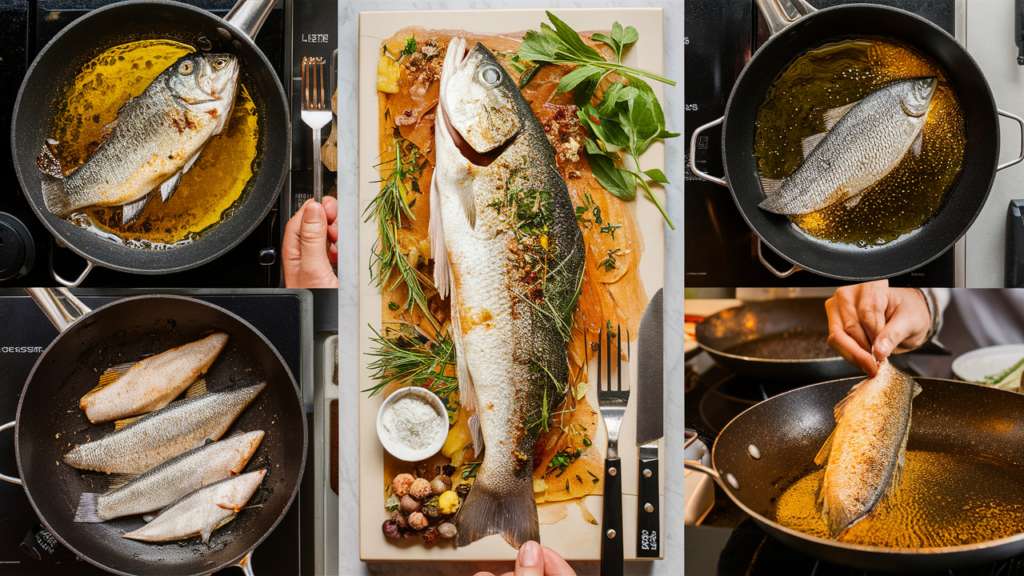
Pairing Fish with Flavors
The best way to enjoy the taste of fish often involves pairing it with complementary flavors and ingredients. Here are some classic pairings:
- Lemon and Herbs: Lemon’s acidity and fresh herbs like dill, parsley, and thyme enhance the natural flavors of fish without overpowering them.
- Butter and Garlic: The richness of butter and the pungency of garlic create a luxurious, savory profile that complements many fish varieties.
- Tomato and Basil: The sweetness of tomatoes and the aromatic notes of basil pair beautifully with milder fish, adding depth without overwhelming the taste.
- Soy Sauce and Ginger: For a more Asian-inspired flavor profile, soy sauce and ginger add umami and a bit of spice, enhancing the taste of fish like tuna and salmon.
- Capers and White Wine: Capers’ briny tang and the acidity of white wine create a bright, complex flavor that works well with fish like halibut and sea bass.
Cooking Techniques to Enhance Fish Flavor
The cooking method can significantly impact the flavor and texture of fish. Here are some popular techniques:
Grilling
Grilling adds a smoky, charred flavor to fish, making it an excellent choice for firmer varieties like swordfish, tuna, and mahi-mahi. To grill fish:
- Preheat the grill to medium-high heat.
- Brush the fish with olive oil and season with salt and pepper.
- Grill for 3-4 minutes per side, depending on thickness, until the fish is opaque and flakes easily.
Baking
Baking is a gentle cooking method that retains moisture and enhances the natural flavors of fish. It’s ideal for delicate fish like cod, snapper, and trout. To bake fish:
- Preheat the oven to 375°F (190°C).
- Place the fish in a baking dish and season with herbs, lemon, and butter.
- Bake for 15-20 minutes, depending on thickness, until the fish is opaque and flakes easily.
Pan-Searing
Pan-searing creates a crispy exterior while keeping the interior tender and moist. It’s perfect for fish like salmon, sea bass, and grouper. To pan-sear fish:
- Heat a tablespoon of oil in a skillet over medium-high heat.
- Season the fish with salt and pepper.
- Sear for 3-4 minutes per side, depending on thickness, until the fish is golden brown and flakes easily.
Poaching
Poaching is a gentle cooking method that preserves the delicate texture and flavor of fish. It’s ideal for fish like halibut and cod. To poach fish:
- In a large skillet, combine water, white wine, lemon slices, and herbs.
- Bring to a simmer over medium heat.
- Add the fish and cook for 10-15 minutes, depending on thickness, until the fish is opaque and flakes easily.
Steaming
Steaming preserves the delicate flavor and moistness of fish. It’s ideal for fish like sea bass and snapper. To steam fish:
- Fill a steamer pot with water and bring to a boil.
- Place the fish in the steamer basket and season with herbs and lemon.
- Cover and steam for 10-15 minutes, depending on thickness, until the fish is opaque and flakes easily.
Conclusion
The best-tasting fish depends on personal preferences, but certain species stand out for their unique flavors and textures. From the rich, oily taste of salmon to the mild, sweet flavor of snapper, there’s a fish to suit every palate. Understanding the factors that influence the taste of fish, as well as the best cooking methods and flavor pairings, can help you appreciate the delicious diversity of seafood. Whether you’re a seasoned seafood lover or new to the world of fish, exploring these varieties will surely delight your taste buds.
Hooked on Tech: Exploring the latest Fishing Gadgets that Anglers swear by.
In the realm of angling, where tradition and technology often converge, a new wave of fishing gadgets has emerged, transforming the way anglers approach their craft.
From advanced fish finders to smart bait systems, these innovations have not only revolutionized the fishing experience but have also garnered a loyal following among anglers worldwide.
SF Fly Fishing Landing Net Soft Rubber Mesh Trout Net Catch and Release Net
$34.99 (as of November 18, 2025 23:58 GMT +00:00 – More infoProduct prices and availability are accurate as of the date/time indicated and are subject to change. Any price and availability information displayed on [relevant Amazon Site(s), as applicable] at the time of purchase will apply to the purchase of this product.)KastKing Fishing Pliers, Fish Lip Gripper or Fish Scale Combo Saltwater Resistant Fishing Tools, Fishing Gear with Rubber Handle, Lanyard, Line Cutter Hook Remover with Sheath, Ice Fishing Gift Men
$23.99 (as of November 18, 2025 23:58 GMT +00:00 – More infoProduct prices and availability are accurate as of the date/time indicated and are subject to change. Any price and availability information displayed on [relevant Amazon Site(s), as applicable] at the time of purchase will apply to the purchase of this product.)Pullther fishing Stainless Steel Fishing Pliers,Needle Nose Pliers Fishing,Fishing Pliers Hook Remover,Fishing Pliers Kit with Lanyard,Braid Cutter Rustproof Fishing Multitool for Saltwater Freshwater
$8.99 (as of November 18, 2025 10:29 GMT +00:00 – More infoProduct prices and availability are accurate as of the date/time indicated and are subject to change. Any price and availability information displayed on [relevant Amazon Site(s), as applicable] at the time of purchase will apply to the purchase of this product.)Sosation 482 Pcs Fishing Gear Equipment Kit, Backpack and Tackle Box with Tackle Included, Lures, Hooks, Sinkers Tools Accessories Kit Fishing Gifts for Men
$58.99 (as of November 18, 2025 02:23 GMT +00:00 – More infoProduct prices and availability are accurate as of the date/time indicated and are subject to change. Any price and availability information displayed on [relevant Amazon Site(s), as applicable] at the time of purchase will apply to the purchase of this product.)EZUVITA 7-Piece Fishing Tool Kit – Fishing Pliers with Lanyard and Protective Sheaths, 7-inch Fishing Knife, Fishing Lip Gripper, Fishing Scissors with Tool Retractor, Fishing Gifts for Fishmen
$20.99 (as of November 18, 2025 16:24 GMT +00:00 – More infoProduct prices and availability are accurate as of the date/time indicated and are subject to change. Any price and availability information displayed on [relevant Amazon Site(s), as applicable] at the time of purchase will apply to the purchase of this product.)Eupheng Sheepshead Jigs, Standup Style Saltwater Fishing Jigheads, 1/2oz 3/4oz 1oz 1.5oz & 2oz with 2X Strengthened Hooks for Blackfish (Tautog), Grouper & Snapper
$13.99 (as of November 18, 2025 22:28 GMT +00:00 – More infoProduct prices and availability are accurate as of the date/time indicated and are subject to change. Any price and availability information displayed on [relevant Amazon Site(s), as applicable] at the time of purchase will apply to the purchase of this product.)YAFIYGI Skin Tag Rubber Band 2X Pellet Bander Tool Set Micro Bait Bands for Fishing Terminal Tackle with 100 Bands, Match Coarse Fishing Accessories Kit
$7.88 (as of November 18, 2025 10:29 GMT +00:00 – More infoProduct prices and availability are accurate as of the date/time indicated and are subject to change. Any price and availability information displayed on [relevant Amazon Site(s), as applicable] at the time of purchase will apply to the purchase of this product.)2 Packs Upgrade 2/3 Claw Fish Gripper, Metal Fishing Pliers Gripper Catch Fish Control Clamp, Three Teeth Fishing Pliers Control Forceps Fishing Accessories for Most Freshwater Fish Grip Tackle Holder
$18.99 (as of November 18, 2025 02:18 GMT +00:00 – More infoProduct prices and availability are accurate as of the date/time indicated and are subject to change. Any price and availability information displayed on [relevant Amazon Site(s), as applicable] at the time of purchase will apply to the purchase of this product.)KastKing Lethal Blaze Twin-tip Fishing Rod and Reel Combo, Spinning & Baitcaster Combo, Flame Pattern Design, IM6 Graphite 2Pc Rod with Backup Tip Section, Stainless-Steel Guides, EVA Handle
$89.99 (as of November 18, 2025 22:28 GMT +00:00 – More infoProduct prices and availability are accurate as of the date/time indicated and are subject to change. Any price and availability information displayed on [relevant Amazon Site(s), as applicable] at the time of purchase will apply to the purchase of this product.)RUNCL Braided Fishing Line Merced, 1000 500 300 Yards Braided Line 4 8 Strands, 6-200LB – Proprietary Weaving Tech, Thin-Coating Tech, Stronger Smoother for Freshwater Saltwater
$18.99 (as of November 18, 2025 04:58 GMT +00:00 – More infoProduct prices and availability are accurate as of the date/time indicated and are subject to change. Any price and availability information displayed on [relevant Amazon Site(s), as applicable] at the time of purchase will apply to the purchase of this product.)HERCULES Cost-Effective Super Cast 8 Strands Braided Fishing Line 10LB to 300LB Test for Salt-Water,109/328/547/1094 Yards(100M/300M/500M/1000M),Diam.#0.12MM-1.2MM,Hi-Grade Performance,Variety Colors
$42.99 (as of November 18, 2025 04:59 GMT +00:00 – More infoProduct prices and availability are accurate as of the date/time indicated and are subject to change. Any price and availability information displayed on [relevant Amazon Site(s), as applicable] at the time of purchase will apply to the purchase of this product.)RUNCL ProBite Lipless Crankbait, Vibe Cranks 1/4oz 3/8oz 1/2oz 5/8oz, Hard Fishing Lures – Lifelike Design, Loud Rattles, Precise Weighting System, Tight Wobble Action
Now retrieving the price.
(as of November 18, 2025 22:28 GMT +00:00 – More infoProduct prices and availability are accurate as of the date/time indicated and are subject to change. Any price and availability information displayed on [relevant Amazon Site(s), as applicable] at the time of purchase will apply to the purchase of this product.)
